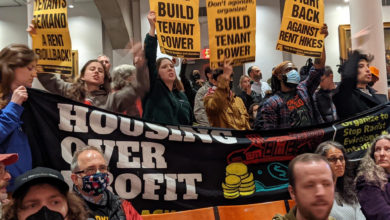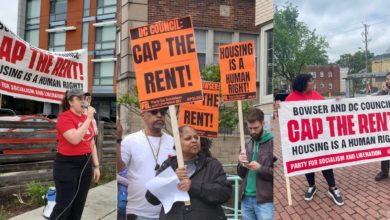A hurricane of evictions is about to be unleashed across the United States. The moratorium on evictions from federally backed rental properties expired on July 25, while most of the state eviction bans still in existence are set to expire in the next few weeks. An estimated 19 to 23 million people, or 1 in 5 of the 110 million Americans who live in renter households, are at risk of eviction by September 30.
Even before the coronavirus pandemic, millions of tenants were threatened with eviction because of unaffordable rents. An investigation of 285,000 eviction cases in the city of Detroit in 2017, for example, revealed that families in 1 out of 5 rentals face eviction every year, and that the vast majority of landlords who took renters to court were themselves operating illegally. About 3,000 Detroiters will face immediate eviction, based on judgments entered before the pandemic emergency, when the moratorium on evictions in the city is lifted on August 15.
According to the Eviction Lab at Princeton University, four evictions were filed by landlords every minute in 2016, when the national unemployment rate was 4.7 percent. Today, unemployment is close to three times that level. It is estimated that 50 million renters suffered virus-related job or income loss, with 40 percent in low-income households.
Activists have already been mobilizing caravans, demonstrations and organizing tenant unions to challenge the current crisis, including the national day of action July 25 organized by PSL’s Cancel the Rents campaign and others. Organizers have been demanding an extension of the eviction moratoriums and cancellation of the unpayable rents because of the COVID-19 crisis.
To help advance this struggle to alleviate the suffering of millions of people, it is worth looking at the experiences of the working class in the 1930s during the Great Depression in the face of a crisis similar to today.
At that time, under the leadership of socialists and communists, unemployed councils were organized in neighborhoods across the US. When families faced foreclosure and eviction from their homes, the unemployed councils mobilized to stop the sheriffs and bailiffs in their tracks, oftentimes moving families back in when the sheriffs tried to remove them.
At the same time they were carrying out this direct action, the unemployed councils raised and won political demands to abate the crisis. For example, 25 states implemented moratoriums on foreclosures and evictions through the course of the Depression. The Michigan Mortgage Moratorium Act, first passed in 1933, placed a halt on home foreclosures and foreclosure-related evictions for five years. Under terms of this law, a judge was not only mandated to halt foreclosures and evictions, but to put into effect “fair rental terms” that would allow residents to remain in their homes.
We can win again!
Moratorium bills like this, passed as a result of the revolutionary struggles of the working class, were actually upheld by the U.S. Supreme Court. In the case of Home Building and Loan Association vs. Blaisdell, it ruled that in periods of emergency the right of the people to survive takes precedence over the contract clause of the Constitution. This case is still good law, and should be thrown in the face of any governor who tries to claim he or she doesn’t have the power to stop evictions or cancel rents.
As states lift eviction moratoriums today, many are replacing them with “housing assistance” bills. But activists should be leery of these proposals, which most often are subsidies to the landlords to make up their losses. These bills make no differentiation between a small family landlord who owns one or two homes and genuinely may need a subsidy to survive, and the bulk of landlords, which are increasingly huge financial trusts that don’t deserve a dime.
These securitized investors moved into the residential rental housing market after picking up foreclosed homes for next to nothing during the racist subprime foreclosure epidemic of 2005 to 2010. Some $60 billion in residential rental homes are now owned by these investments funds. These investors are the worst landlords and evicters because they are solely motivated by maximizing profit and paying off the banks. And about 49 percent of multi-family rentals are already either owned or backed by the federal government through HUD, Fannie Mae or Freddie Mac.
The fight is sure to intensify as millions face homelessness in the coming period. The demand for housing as a human right will hold center court, along with demands to end evictions until the coronavirus emergency and the ensuing capitalist economic crisis are overcome, and for rents to be canceled until an affordable rent payment plan is put in effect for each affected household. An end to utility and water shutoffs, and utility payments based on a realistic affordability index, should be raised as well.
Like every gain for the working class, this battle will be won through militant direct action to stop evictions.





